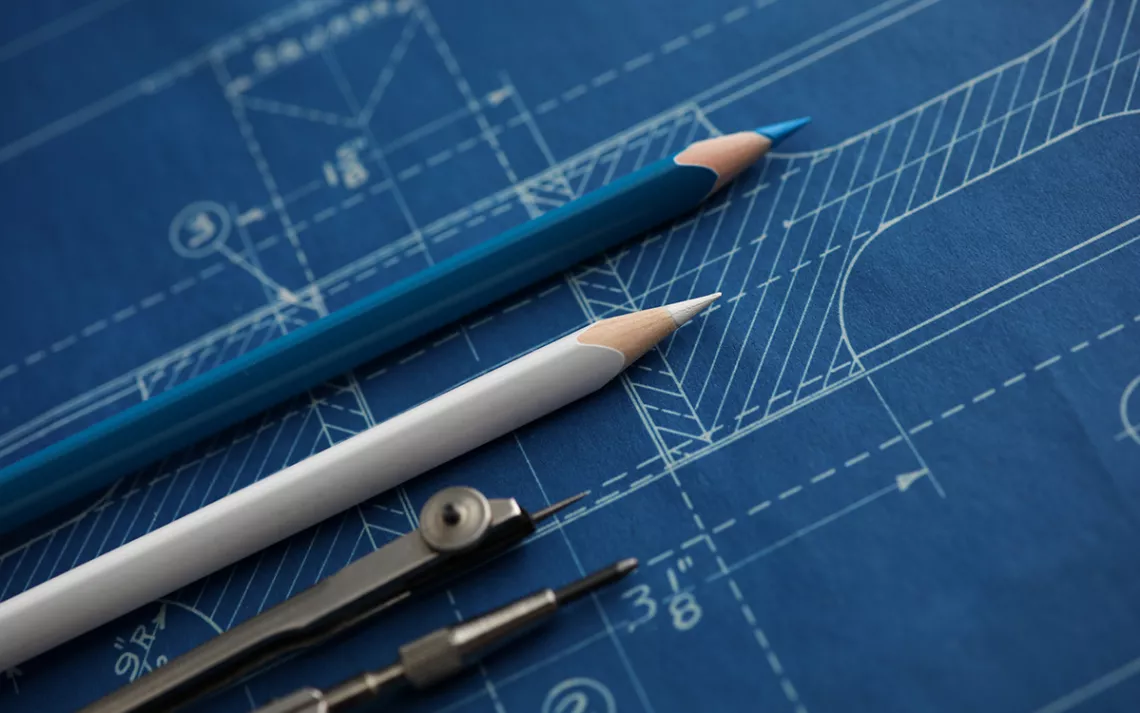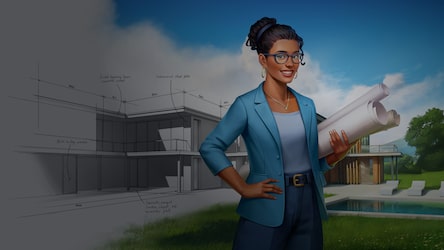Architect Insights on Harmonizing Form and Function
Architect Insights on Harmonizing Form and Function
Blog Article
Recognizing the Diverse Career Paths Available for Aspiring Architect
As an ambitious Architect, you have a world of career courses waiting for you. Whether you're drawn to standard architecture or the nuances of lasting layout, there's a specific niche that straightens with your rate of interests.
Conventional Architecture: Designing Frameworks and structures
Conventional design concentrates on creating buildings and frameworks that blend functionality with visual allure. Your layouts can show social heritage, showcasing regional practices while fulfilling modern-day demands.
You'll create abilities in composing, model-making, and website evaluation, permitting you to visualize and interact your concepts successfully. Engaging with customers, you'll need to recognize their vision and equate it right into possible designs.
Moreover, constructing codes and sustainability practices are necessary in your job, guaranteeing your structures are secure and ecologically friendly. As you expand in your occupation, you'll find opportunities in domestic, commercial, or even reconstruction jobs, each offering distinct obstacles. Embracing typical style paves the method for a meeting occupation that admires the past while forming the future.
Urban Planning: Shaping Communities and Public Spaces
As a hopeful Architect, you can play a vital duty as an urban organizer, transforming how areas work and communicate. By utilizing area involvement strategies, you'll ensure that residents have a voice in forming their setting. Plus, integrating lasting layout principles will certainly help produce rooms that not only satisfy today's needs however additionally safeguard the future.
Duty of Urban Planners
While many may think about architects as the single dreamers behind buildings, metropolitan organizers play a vital role in shaping the more comprehensive landscape of communities and public areas. They examine land usage, zoning laws, and neighborhood requires to develop lasting environments that enhance high quality of life. By teaming up with numerous stakeholders, you'll help develop parks, transport systems, and household locations that promote social interaction and access. Urban organizers also concentrate on environmental considerations, making sure that advancements incorporate environment-friendly spaces and support biodiversity. Your know-how in spatial layout and area characteristics permits you to picture future growth while protecting cultural heritage. In this vital duty, you'll directly affect just how people experience their environments, making every project an opportunity for positive change.
Neighborhood Engagement Approaches
Efficient area engagement techniques are essential for metropolitan planners to assure that the voices of citizens are listened to and valued in the planning procedure. To promote purposeful dialogue, you must prioritize open forums and workshops where neighborhood participants can share their concepts and problems. By actively incorporating and paying attention feedback, you'll produce spaces that mirror the community's requirements, inevitably leading to even more successful and lasting metropolitan atmospheres.
Sustainable Layout Principles
When making metropolitan rooms, integrating sustainable design concepts is crucial for developing settings that flourish both environmentally and socially. You must begin by concentrating on power effectiveness, utilizing materials that reduce waste and advertise recycling. Think about incorporating green rooms, like parks and yards, to improve biodiversity and improve air top quality. Advertising walkability and public transport can reduce dependence on cars, cultivating a much healthier neighborhood.
Designing with water preservation in mind is likewise key-- assume regarding rain yards and permeable surface areas to manage stormwater. Entailing neighborhood participants during the preparation process warranties that the areas you develop meet their needs and urge social communication. By embracing these concepts, you'll add to lively, lasting metropolitan landscapes that profit everyone.

Landscape Design: Producing Sustainable Exterior Atmospheres
As you check out landscape style, you'll discover crucial layout concepts that produce useful and lovely outside rooms. Lasting practices play a vital role in ensuring these settings flourish while minimizing ecological impact. And also, you'll find a selection of occupation opportunities that enable you to make a real distinction in how individuals interact with nature.
Style Concepts in Landscape
Comprehending layout concepts in landscape style is important for producing sustainable outside atmospheres that integrate with nature. You'll need to consider aspects like proportion, balance, and range to ensure your styles feel cohesive and welcoming. Additionally, pay attention to seasonal changes, designing with materials that enhance the environments year-round.
Lasting Practices Summary
Sustainable practices in landscape style not just focus on aesthetic appeals however also prioritize eco-friendly wellness and source preservation. By integrating native plants, you enhance biodiversity and reduce the demand for chemical fertilizers and pesticides. Applying reliable irrigation systems aids preserve water and reduces runoff, shielding close-by ecosystems. You can make areas that promote dirt health, such as practicing and making use of organic materials permaculture concepts. In addition, incorporating green framework, like rain yards and porous sidewalks, aids in stormwater monitoring and decreases city warm. You contribute to a much healthier planet and supply rooms that promote area connection when you produce exterior environments with sustainability in mind. Eventually, these techniques guarantee your styles profit both people and the atmosphere for several years to come.
Career Opportunities Exploration
With a strong structure in lasting practices, landscape architecture uses a range of profession paths that permit you to make a purposeful effect on the setting. Urban coordinators typically collaborate with landscape engineers to produce environment-friendly areas in urban setups, enhancing city livability. If you're enthusiastic about education and learning, think about coming to be a landscape design instructor, inspiring future generations.
Lasting Style: Concentrating On Eco-Friendly Practices
As you explore your job in architecture, welcoming green practices can establish you apart in a competitive area. Lasting design concentrates on creating buildings that decrease environmental impact while enhancing resident wellness. By incorporating sustainable products, energy-efficient systems, and sustainable structure strategies, you'll add to a greener future.
Start by getting expertise of eco-friendly qualifications like LEED or BREEAM, which can bolster your credentials. Think about just how natural light, ventilation, and thermal effectiveness can maximize style. Work together with designers and environmental specialists to innovate services that reduce waste and save sources.
Don't fail to remember the importance of neighborhood participation-- interesting neighborhood stakeholders can motivate designs that harmonize with the setting. As clients significantly prioritize sustainability, your know-how in eco-friendly practices will certainly not only draw in tasks however additionally fulfill your passion for web liable architecture. Embrace this crucial facet of the profession, and enjoy your occupation grow.
Historic Conservation: Safeguarding and Recovering Cultural Heritage
While you start on your building trip, think about the vital role of historic preservation in maintaining our cultural heritage. This field focuses on the security and read review remediation of significant structures, sites, and structures that tell the tales of our past. By participating in historic preservation, you'll help safeguard the architectural heritage that forms neighborhood identity.
As a historic conservation Architect, you'll examine historical relevance and examine the problem of structures. You'll work very closely with preservationists and historians to assure genuine restoration techniques are utilized. This job course enables you to blend creativity with study, enabling you to make options that appreciate original materials and workmanship.
Your job not just adds to sustainability by reusing existing structures yet likewise cultivates a feeling of pride within neighborhoods. Welcoming this path will aid you come to be a guardian of background, maintaining the stories and aesthetic appeals that enhance our lives.
Interior Design: Enhancing Indoor Spaces
Historical preservation and interior design both share a dedication to enhancing the developed setting, yet they concentrate on different elements. While historical preservation emphasizes preserving a framework's social and historical value, indoor style zeroes in on optimizing indoor areas for capability and aesthetics.
As an aspiring Architect, you'll discover that indoor style permits you to mix creativity with technical skills. You'll develop spaces that not just look excellent yet additionally advertise convenience and efficiency. This field involves understanding how light, color, and materials interact within a space, affecting mood and usability.
You'll work with various projects, from domestic homes to business workplaces, making certain that each environment meets the needs of its residents. By prioritizing user experience, you can transform insides right into motivating and practical spaces, making a significant effect on just how individuals engage with their surroundings. Embrace the possibility to enhance indoor atmospheres and shape the method individuals live and function.
Industrial Layout: Merging Functionality With Visual Appeals
Industrial layout plays an important role in producing items that perfectly blend visual appeals with capability, making certain that what you make use of day-to-day is not just visually appealing yet likewise functional. As an aspiring Architect, you might immerse yourself in this field, concentrating on making everything from furnishings to consumer electronics. Your job entails recognizing individual needs, products, and producing procedures, enabling you Architect to develop ingenious solutions that improve everyday experiences.
In industrial design, you'll typically work together with online marketers, engineers, and producers, ensuring that your designs are not just beautiful yet additionally viable. This occupation path supplies a vibrant atmosphere where imagination meets practicality, making it a rewarding selection for designers interested in shaping the items of tomorrow.
Regularly Asked Concerns
What Educational Credentials Do I Required to End Up Being a Designer?
To become an engineer, you'll need a professional level in design, generally a Bachelor's or Master's. Additionally, you'll need to complete a teaching fellowship and pass the Architect Registration Assessment to practice legitimately.
Are There Accreditation Requirements for Various Architectural Career Paths?
Yes, there're accreditation requirements for numerous architectural courses. Architect. You'll need to pass tests, complete teaching fellowships, and in some cases seek specialized training, depending upon your picked focus, like landscape style, urban style, or historic conservation
What Software Application Skills Are Necessary for Designers Today?

How Can I Gain Practical Experience While Researching Design?
You can acquire sensible experience by interning at architectural companies, taking part in style competitions, offering for community tasks, or working together with schoolmates on real-world tasks. These opportunities boost your skills and construct important links in the industry.
What Work Opportunities Exist Outside Standard Architecture Firms?
You can check out various job chances outside conventional architecture companies, like urban planning, indoor design, landscape design, construction administration, actual estate development, or perhaps duties in sustainability consulting. Each offers special obstacles and rewards.
Whether you're drawn to typical architecture or the nuances of lasting layout, there's a niche that lines up with your interests.When developing metropolitan areas, incorporating sustainable style principles is crucial for producing settings that grow both ecologically and socially.As you explore landscape design, you'll find crucial design principles that produce lovely and practical exterior areas.Comprehending layout concepts in landscape style is vital for producing lasting outside atmospheres that integrate with nature.In commercial style, you'll usually team up with marketing professionals, engineers, and producers, guaranteeing that your designs are not just beautiful but additionally viable.
Report this page